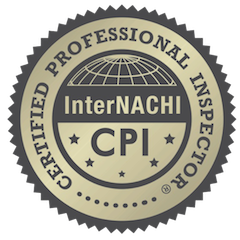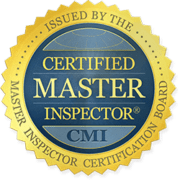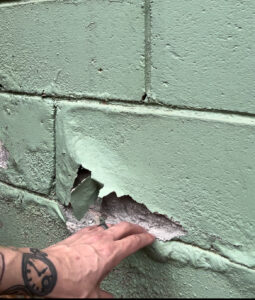
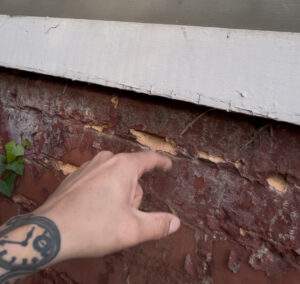

When it comes to home improvement projects, painting brick surfaces can be a tempting choice. Whether it’s your fireplace, exterior walls, or a brick accent, a fresh coat of paint can modernize the look of your home, making it feel brand new. But before you start rolling on the paint, it’s crucial to be aware of the problems associated with painting brick. While it can deliver great results, there are significant challenges to consider that could lead to unforeseen issues down the road.
Here are some of the top problems to look out for when painting brick:
1. Moisture Trapping
One of the most serious issues with painting brick is that it can trap moisture inside the surface. Brick is naturally porous, which allows it to breathe and release moisture. When you paint over brick, the paint creates a barrier that prevents this natural airflow. Moisture can become trapped within the porous material, leading to a build-up of water behind the paint. Over time, this can cause the paint to peel, bubble, or crack. In the worst-case scenario, trapped moisture could also lead to mold and mildew growth, which can result in health concerns and costly repairs.
2. Chipping and Peeling Paint
Brick’s rough, uneven surface doesn’t lend itself well to a smooth, long-lasting paint job. Even with proper preparation, paint may not adhere well to brick, leading to chipping or peeling over time. The natural expansion and contraction of brick due to temperature changes can cause stress on the painted surface, making it more susceptible to flaking. If you choose to paint brick, using the right type of primer and high-quality paint is crucial to ensure better adhesion and durability. However, even with these precautions, paint might still peel in high-moisture areas or during extreme temperature changes.
3. Maintenance Nightmares
Once you’ve painted your brick, it’s not a one-and-done deal. Painted brick requires regular maintenance to keep it looking fresh. Over time, dirt, stains, and soot can accumulate, which will require frequent cleaning. Pressure washing, which may seem like an easy solution, is not recommended for painted brick as it can cause damage to the surface and strip away the paint. Routine touch-ups might be necessary to keep the painted surface looking pristine, and this can be a time-consuming and costly task.
4. Potential Damage to the Brick
While it may seem like a minor issue, painting brick can actually cause damage to the material itself. Over time, the paint can weaken the structure of the brick. In some cases, when it comes time to remove the paint, it can be extremely difficult to strip away without damaging the surface. The process of sanding or using harsh chemicals to remove the paint could also cause erosion of the brick’s exterior, which can negatively affect the integrity of the brick and mortar.
5. Difficulty in Removing the Paint
Once you paint brick, it’s often not easy to reverse the decision. If you ever want to go back to the natural look of brick or decide to change the paint color, the process of removing paint from brick is extremely labor-intensive. Sandblasting and chemical paint removers can be harsh, potentially damaging the surface of the brick or causing the mortar to weaken. In addition, the process can be costly and time-consuming, with no guarantee that you’ll achieve a clean, fresh surface.
6. Color Fading
Another common issue with painting brick is that the paint can fade over time, especially when exposed to the elements. Outdoor brick, like on patios or the exterior of your home, is especially vulnerable to UV rays, which can cause the color to degrade and lose its vibrancy. Paint that is exposed to the sun on a consistent basis might begin to look dull or chalky, leading to an outdated appearance sooner than expected. Using high-quality, UV-resistant paints can help mitigate this issue, but it won’t completely eliminate the risk.
7. Impact on Property Value
While painted brick can enhance the aesthetic appeal of your home, it may not always add value. In fact, in some cases, it could detract from the home’s resale value. Potential buyers may prefer the natural, unpainted brick look, especially if it’s a historically significant material. Additionally, the risks associated with maintaining painted brick—such as peeling, cracking, and the potential for moisture issues—could be seen as a red flag by prospective buyers.
8. Environmental Impact
Lastly, it’s important to consider the environmental impact of painting brick. Many paints contain volatile organic compounds (VOCs) that can be harmful to the environment and your health. VOCs are released into the air as the paint dries and can contribute to indoor air pollution. Additionally, some chemical paint removers used to strip paint from brick can be hazardous to the environment. If you’re concerned about sustainability, choosing low-VOC or eco-friendly paint options is a step in the right direction, though this doesn’t eliminate all environmental concerns.
Conclusion: Is Painting Brick Worth It?
Painting brick comes with its fair share of challenges, and it’s essential to weigh the pros and cons before you dive into this home improvement project. While it can give your space a fresh, modern look, the risks associated with moisture, peeling, maintenance, and long-term damage to the brick are not to be overlooked. If you do choose to paint your brick, proper preparation, high-quality materials, and regular upkeep will go a long way in ensuring the best possible results.
In the end, the decision to paint brick should be made carefully, keeping in mind the potential for long-term complications and maintenance headaches. If you’re unsure, you might consider alternative options like brick stain, which can preserve the natural texture of the brick while still achieving a fresh, updated look.

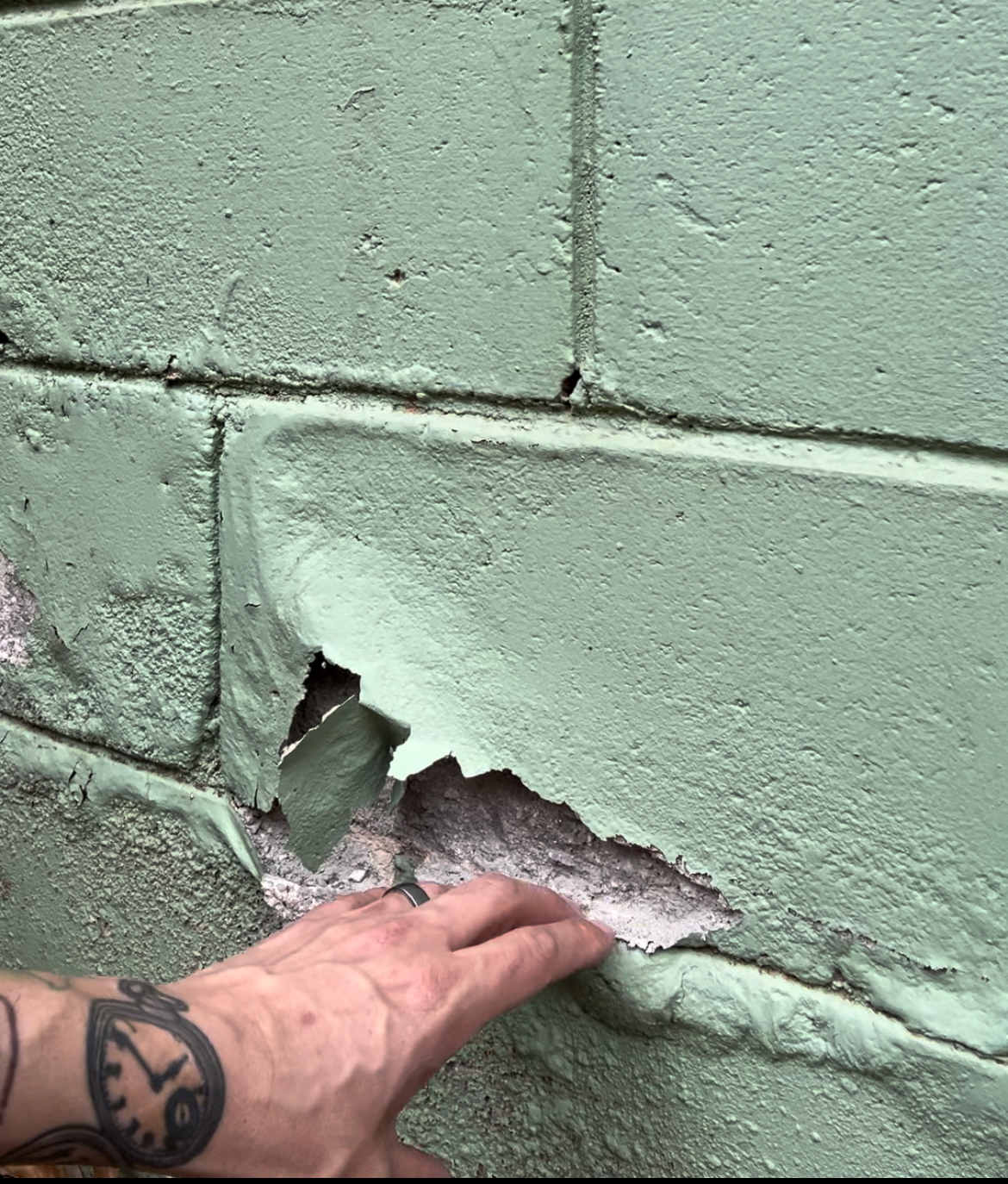
.png)

